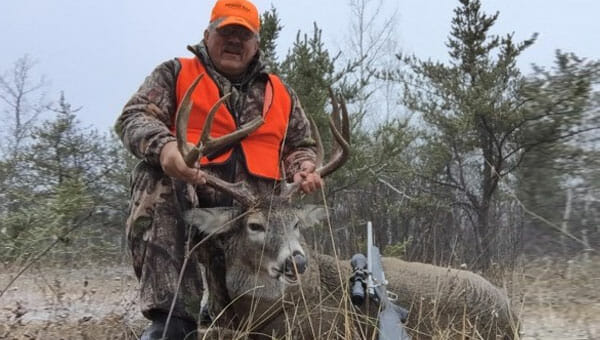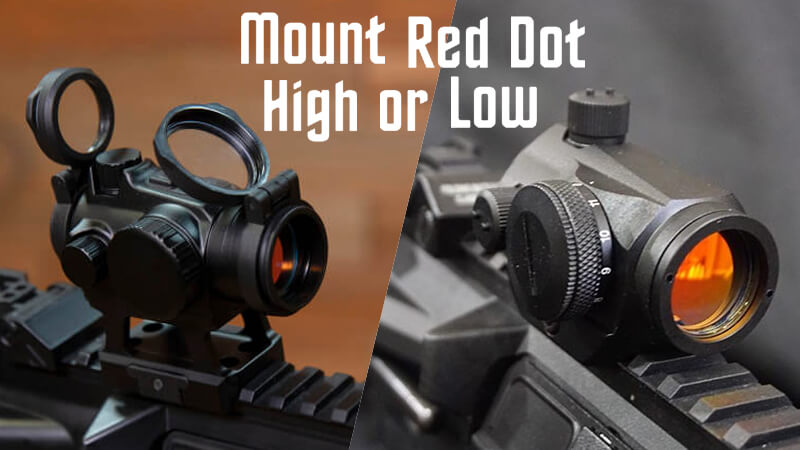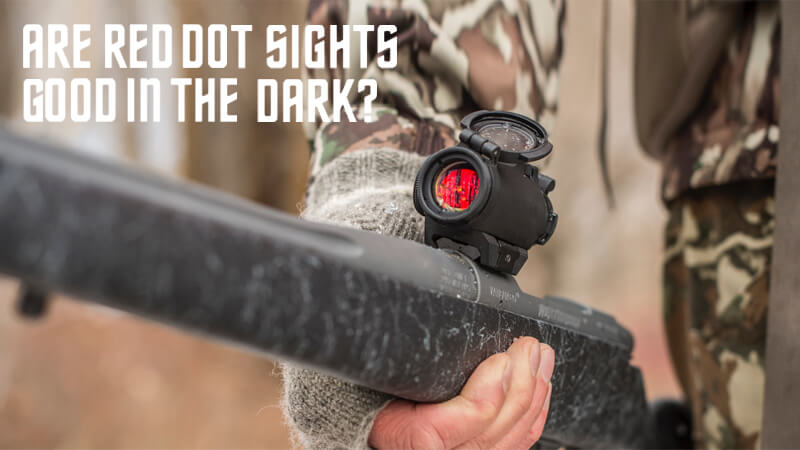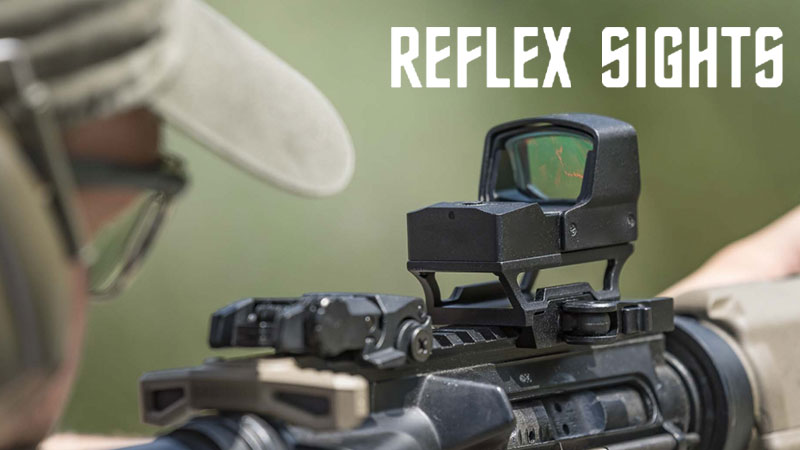Hunting season is just around the corner. Maybe you’ve heard your buddies talk about how satisfying it was to bag their first buck and don’t want to be left out. Or get in touch with the hobbies of your forefathers.
Whatever the reason that prompted you to start deer hunting, know that this is a venture of discipline, patience, and dedication.
Once you’ve chosen your rifle, the next must be a dependable rifle scope. But how to choose a rifle scope for deer hunting in a market filled with tons of them?
Read on if you want to know more about what features your first hunting scope should have.
What Is a Rifle Scope?
A rifle scope is an optical tool that has magnification capabilities. Its purpose is to acquire long-distance targets for precise aiming. It is faster and easier than lining up your iron sights.
Every rifle scope name states three things:

Parts of a Scope

Objective Bell

This part is so named because it is the closest to the object you are looking at. The objective bell houses the objective lens.
The Objective lens gathers light for a brighter and clearer Field of View(FOV). The lens’s average size can range from 20 – 60 mm. The bigger the lens, the more light it gathers.
Scope Tube
The straight metal tube houses the erector assembly and the focal plane. It can be either 1 inch or 30 mm in diameter.
Reticle and Focal Plane

A reticle or crosshair is a marking you see through a scope. It represents the guide to your aim and can be centered.
The reticle is measured by either Minutes of Angle(MOA) or Milliradian(MRAD).
- MOA = 1 inch per 100 yards distance
- MRAD = 0.1 meters per 100 meters distance
The focal plane is where your reticle resides. Scopes can be either; Fist focal plane(FFP) or the Second focal plane(SFP). The difference between the two is their location in the scope tube.
In FFP, the reticle resides between the objective lens and erector lenses. This setup means that when you magnify the image in your scope, it also magnifies the reticle.
For SFP, the reticle resides between the erector and the ocular lenses. Therefore, magnifying your image does not change the appearance of your reticle.
Erector Lenses
These lenses have two functions; Correcting the inverted image for the objective lens and magnifying the image by moving them along the scope tube.
Turrets/Adjustment Dials

The turret’s purpose is to center the reticle with the firearm’s point of impact. These turrets are located in the center of the scope tube. Scopes have two dials. These are
- Windage adjustment – Located on the right side of the scope tube. Adjusts left or right
- Elevation adjustment – Located on the top of the scope tube. Adjusts up or down
Side Focus Dial/ Parallax Adjustment Dial

These dials are located on the left side of the scope tube. This knob adjusts for a clearer image of FOV in specified distances. When combined with the fast-focus diopter, we can fix parallax errors.
Parallax errors happen when your FOV and reticle are misaligned. This misalignment causes the reticle to shift when you move your head.
Tube or Scope Rings

These are two identical rings that enable scope mounting. Most are designed for a specific type of firearm and scope diameter. Therefore, the height and diameter must be compatible with the size of the scope.
Eye Bell

The part farthest from the target and closest to the shooter. It contains the following:
Fast-Focus Eyepiece Diopter

The fast-focus diopter only has one purpose: to focus the reticle to ensure it’s not blurry. Focusing the reticle must account for eye relief distance.
How do I focus my scope’s reticle?
- Turn your eyepiece diopter fully counterclockwise.
- Look through the scope at a bright clear background. This way makes the reticle the priority for your eye to see. Always position the rifle scope at proper eye relief.
- Look away after 3 seconds. If the reticle is blurry, adjust the eyepiece diopter.
- Do steps 2 and 3 repeatedly until all parts of the reticle are in focus.
Ocular Lens
This lens focuses the light captured by the objective lens before reaching the shooter’s eye.
Magnification or Power Ring

Turning this ring changes your scope magnification from least to maximum and vice versa.
What is an exit pupil?
An exit pupil is the diameter of light as it passes through the eyepiece of a scope or binocular. The light changes in size depending on the optic’s magnification.
The human eye can dilate up to 7mm and degrades with age. Therefore, more than 7mm is not necessary. Divide the objective lens diameter with the magnification setting, and you will have your exit pupil size. (e.g., 50 mm objective lens at eight magnification gives 6.25 exit pupil.)
Here’s a video for further explanation: Minimal and Maximal Exit Pupil | Optics Trade Debates
How Does a Rifle Scope Work?
The objective lens gathers light for a brighter image. Next, the inverted image passes through two erector lenses for correction. Adjusting your power ring changes the lenses’ positions resulting in image magnification. Lastly, the ocular lenses gather light before reaching the human eye.
The best scopes have lens coatings that gather light better and prevent reflection loss. The optimal time for deer hunting is during the early mornings and late afternoons. Deer are more active when light is low or through the night.
How to Choose a Rifle Scope for Deer Hunting?
When choosing a deer hunting rifle, you should check; durability, optical clarity, range of magnification, and cost-effectiveness.
Here is a more detailed checklist of what you need clear before buying your deer hunting scope:
A. Mechanical Aspects
a. All movable parts like the turrets, power ring and eyepiece should be smooth and not loose when adjusting. In the case of turrets, audible clicks should be heard and felt.
b. The bells and tube must be one solid build. More than that could have stress areas susceptible to shift because of recoil and allow moisture to pass through.
c. Durable enough to withstand intense recoil, the weather, and sometimes our clumsy hands.
B. Optical Aspects
a. The glass or lens should be clear and fully multi-coated for anti-reflection and maximum light transfer. It should also be reliable in any shooting condition.
b. Water, fog, and anti-scratch proofing are a must.
c. Check the FOV at low magnification. If it looks like you are in a tunnel, the scope is substandard, even after accounting for eye relief.
d. The side focus turret setting should coincide with the clarity of the distance specified. (e.g., At 150 yards, the FOV should be focused when set at 150.)
e. Magnification power for deer hunting in forested areas with lots of covers, 2.5 – 10x, is adequate. 4 -16x is the better choice for open spaces with less cover.
C. Cost Effective
Or the bang-for-your-buck criteria. Compare your top choice of scopes and determine the average price for rifle scopes with each additional feature.
Like most hunters, we advise that your scope budget should be the same as half the price of your rifle.
Research is essential when it comes to budget scopes. Nowadays, unbiased and unpaid reviews can be found on youtube. Here is an example: Best Budget FFP 6-24 (Under 210.00)
D. Weight
Hunting mature deer means tons of walking and even climbing trees. Therefore, consider the weight of your gear, rifle, and other items that might hinder you.
E. Preference
a. MOA or MRAD. Both have their pros and cons. But choosing one is primarily influenced by your companions in hunting. Therefore, spotters and shooters should use identical measuring systems.
b. FFP or SFP. We prefer the FFP for easy calculation adjustments of your turrets at longer ranges.
c. Covered or Exposed turrets. Covered turrets mean no accidental tampering will misalign your Zero on your hunting trip. The drawback is the time spent uncapping your turret when adjusting your windage or elevation on the fly. Many hunters lose these caps when their concentration is focused elsewhere.
Exposed turrets are the inverse. Easy to adjust on the fly but prone to shift when exposed to solid bumps from, like, a tree branch or when the rifle is dropped.
d. Illuminated reticle. It has its advantages, but the drawbacks are the additional weight and another instrument subjected to recoil. Nevertheless, a great lens beats illumination any day.
e. 30mm or 1-inch tube diameter. The difference between the two is 4.6 mm. If you want more light transfer, the 30mm gives a little bit more.
f. Objective bell size. Paired with compatible tube rings, the weight added to your rifle from a larger objective bell is heavier than those with smaller ones. However, if you don’t mind the weight, The extra light transfer is a definite bonus.
g. Accessories. Side wheels, bubble levels, adjustable scope mounts, silencers, etc. You can have all these; remember, each is an additional weight you’ll carry on uneven terrain. A detachable sunshade is worth its added weight.
Round-up
So there you go, the complete 101 on how to choose a deer rifle for hunting. We covered the basics. You can figure out the rest on your own. With a bit of trial and error, you can discover the right scope specs that work for you.
We suggest buying a hunting scope with the basic features you need to be competitive – obtaining optics to improve your shooting skills.
We created our Arory Tactical 4-16×44 for this exact purpose. It checks all the boxes for veteran and beginner deer hunter’s needs. So add it to your list of possible choices for high-quality rifle scopes.
That’s it from us. Happy hunting!!

FAQ
1. What is the difference between sight and scope?
Scopes have magnification capabilities, while sights have not.
2. What does Zero mean in scopes?
Zero is when the center of your reticle or crosshair is the same as the firearm’s point of impact.
3. Where is the best spot of the body to shoot a deer?
The primary target when hunting deer is the area between the spine and forelegs where the lung and heart reside.
4. Do I wear camouflage when hunting deer?
You should avoid wearing any camouflage gear when hunting. Other hunters may mistake you for an animal. Deer can’t see bright orange or red. We suggest wearing gear with these colors to alert nearby hunters of your presence.
5. What is a deer tag?
Getting a deer tag means you can hunt a specific type of deer within a deadline. Tags can be bought or won through a raffle. You still need a hunter’s license even if you have a deer tag









Leave A Comment
You must be logged in to post a comment.